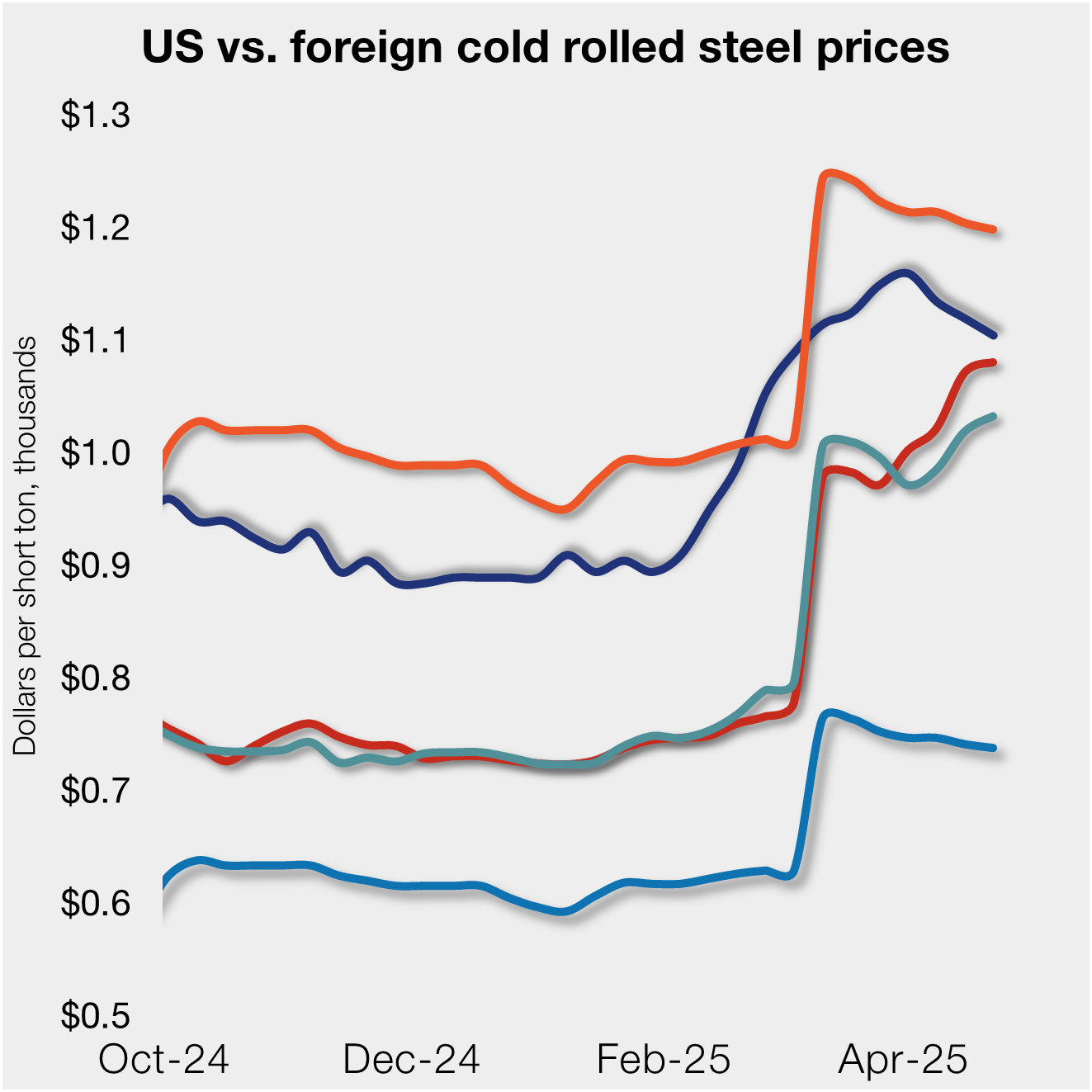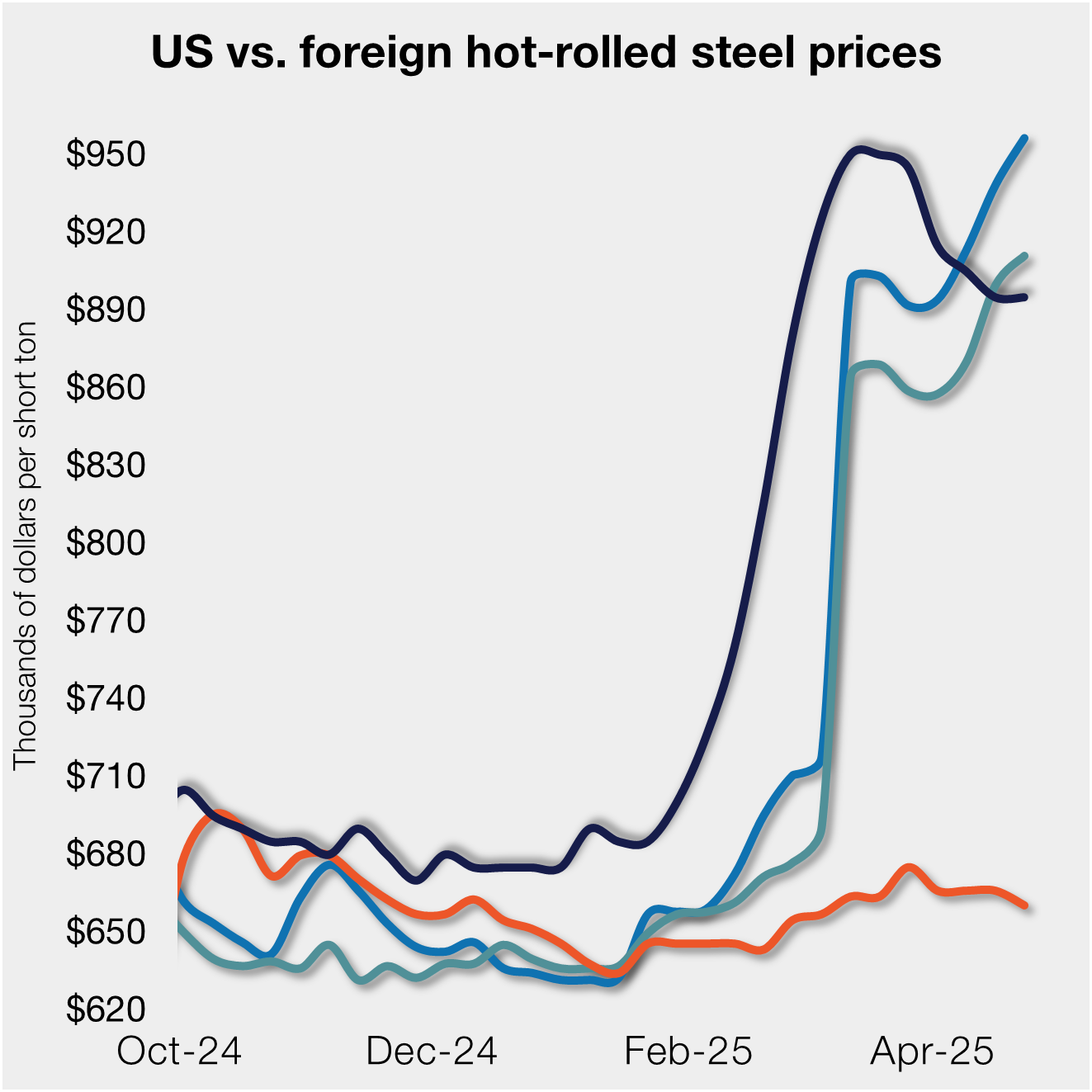Steel Products
Letter to the Editor: Blaming Steel Imports – Again…
Written by John Packard
February 4, 2013
Dear Editor,
Once again, both Nucor and US Steel in their quarterly earnings calls partially blamed imports for their less than stellar results, and frankly, this is getting old.
For the record, it is NOT illegal to import steel into the United States. It might be illegal if those imports were dumped (meaning sold below the home market price in the exporting country and / or below the cost of production, plus 8% profit), but then only if those imports were found to be injurious to the domestic industry.
And the only way to find out whether this is the case is to file a dumping suit. Both US Steel and Nucor have rattled their sabers in earnings call after earnings call, threatening to do so, but nothing has happened. US Steel’s CEO John Surma mentioned Korea by name some time ago as the main culprit when it comes to OCTG and Line Pipe imports. And Mr. Ferriola, who just took over the CEO job at Nucor, muddied up the waters by stating that the US mills were among the lowest cost producers in the world. While this might be true, it has nothing whatsoever to do with the issue at hand. He was asked by one of the analysts participating in the earnings call to explain what would change at Nucor and what would not, and he failed to point out that one of the things that apparently would not change was the constant bitching about imports.
Imports, of course, happen not because the overseas producer or the trading company facilitating the transaction want to annoy or upset Mr. Surma or Mr. Ferriola.
Imports take place because traders do their job of trading and steel buyers (both distributors and end users) buy the imported steel because one, they like the conditions they are being offered, and two, they want to buy insurance. They buy insurance against the often unreasonable and not market-driven price increases which domestic mills try to push through whenever they think they are in the driver’s seat. With only 3 mills controlling close to 80% of the merchant hot rolled coil market, this is not that difficult to achieve. The problem is that greed takes over, and they don’t know when to stop, and invariably, this results in ugly crashes in which everybody is caught with high-priced inventory at a time when prices are in free-fall. And the mills do this year after year, and some of their customers just get tired of these games and are happy that imports provide a viable alternative.
It’s also necessary to remind you that domestic steel is often sold at “price in effect”, meaning that if there is a price increase between the order date and the ship date, the buyer often has to pay the higher price.
This, as some of you might not know, is not how imports are done – price contracted usually is the price billed. Those who get involved in imports also buy insurance against sudden spot shortages, which over the years have happened with regularity. While some of the largest service center chains in the country claim or act like they dislike and don’t buy imports, apparently, there are enough end users and service centers who see strong advantages in doing so.
Imports serve an important role in making sure our markets function properly, they have been here for a long time, and I don’t see them disappearing anytime soon!
I feel also compelled to point out that well over 40% of total 2012 imports of around 36 million tons – over 40 percent – either come from our NAFTA colleagues in Canada and Mexico or represent semi-finished steel like slabs and billets. The customers for the latter are none other than the domestic steel mills, while the owners of some of those exporting mills also own facilities here in the U.S. Add to that the imports of hot rolled coil, which is used to make cold-rolled and galvanize sheet as well as all kinds of welded tubular products, and the remaining number shrinks to something around 18 million tons.
In closing, I would like to suggest to Messrs. Surma, Ferriola et al to start paying more attention to their output numbers in relation to the market. The number one reason given regularly for the sad state of our market is “oversupply”, and the vast majority of those tons are produced right here at home. While RG Steel finally closed their doors, between ThyssenKrupp, Severstal, California Steel and a couple of others, we added between 6 and 7 million tons of new capacity during the last couple of years. Why?
The same is true for tubulars. The capacity utilization rate for this product in the US is barely 40%, and yet, there is a new pipe mill venture announced almost monthly, most of it for pipe going into the energy market. So, if Mr. Surma really wants to know why his OCTG and Line Pipe prices are deteriorating and why the outlook is so bleak, maybe he should also look at all the new capacity that was added in the US during the last 2 years and the additional capacity under construction or on the drawing board.
Peter Brebach
CEO
Iron Angels of Colorado

John Packard
Read more from John PackardLatest in Steel Products

Nucor maintains plate prices
Nucor aims to keep plate prices flat with the opening of its June order book.

US rig count up, Canada declines
Oil and gas drilling activity was mixed this week, according to Baker Hughes. US rig counts expanded for a second straight week, while Canadian activity continued its seasonal slowdown of eight consecutive weeks.

US, offshore CRC prices continue to diverge
US cold-rolled (CR) coil prices declined again this week, slipping for a third straight week. Most offshore markets did the opposite, moving higher this week.

S232 lifts EU HR price over US, Asian HR still well behind
Domestic hot-rolled coil prices were flat this week after dropping for four straight weeks. Most offshore markets bucked the trend and gained ground.

SMU Steel Demand Index dips into contraction
SMU’s Steel Demand Index has moved into contraction, according to late April indicators. The slowdown comes in response to growing tariff uncertainty after the index reached a four-year high in late February.
